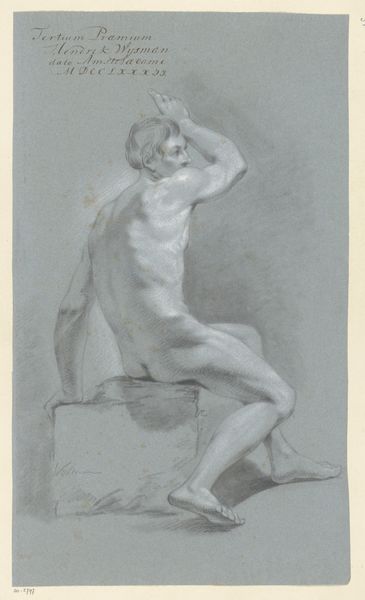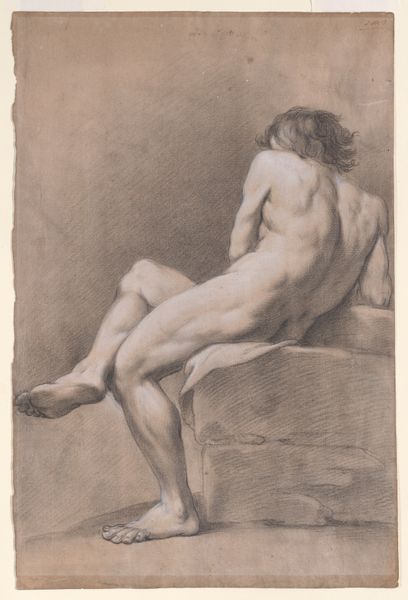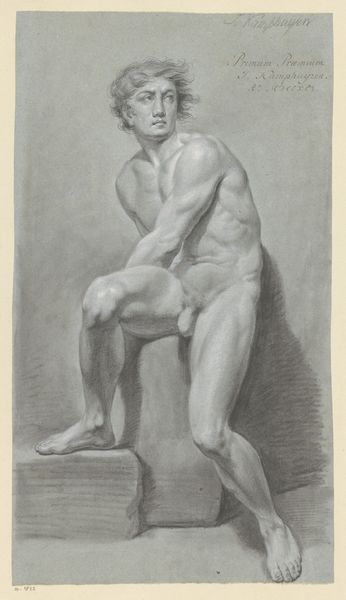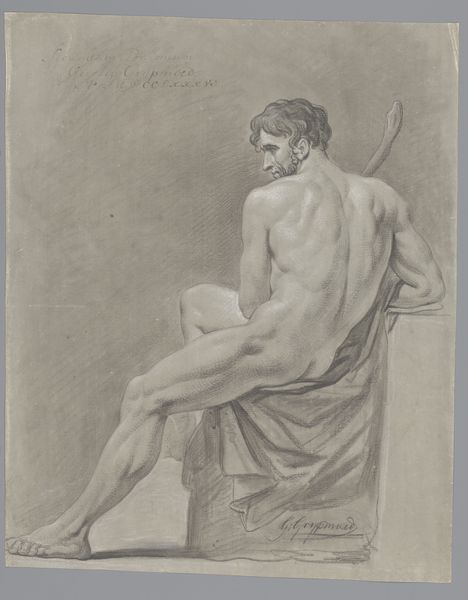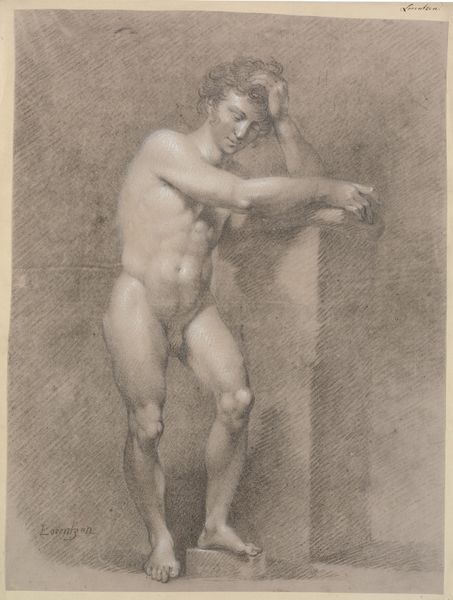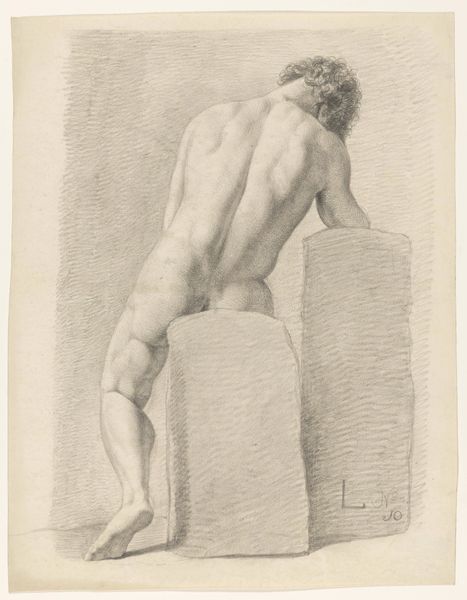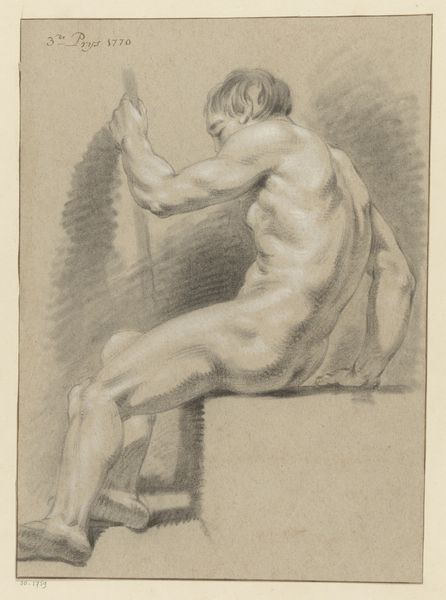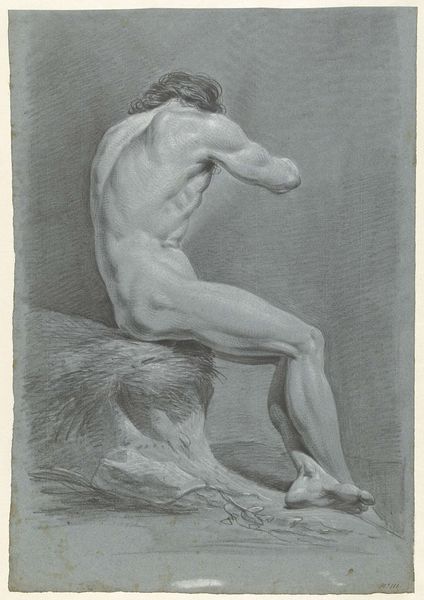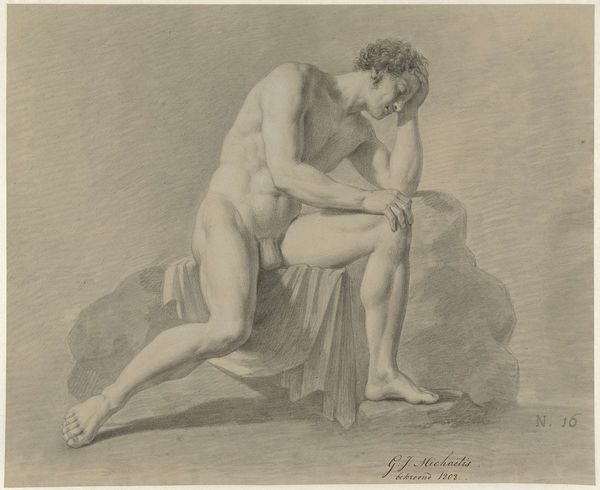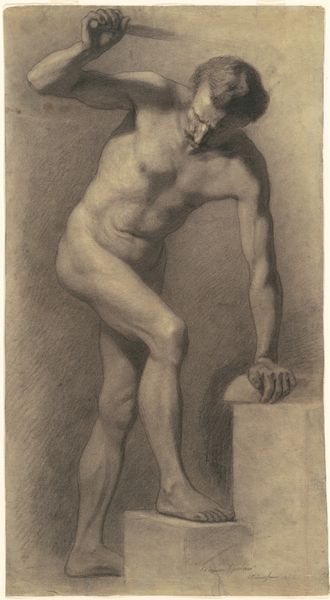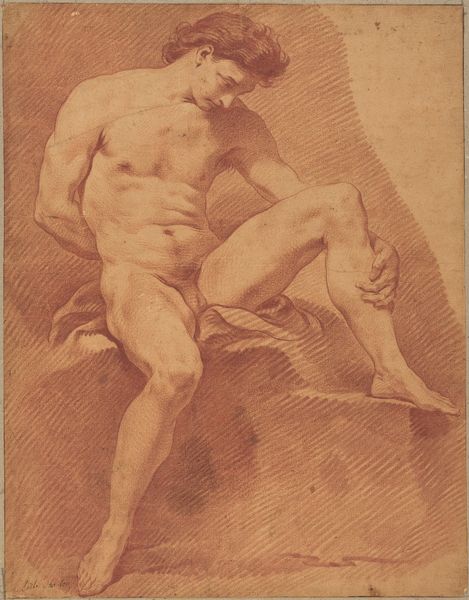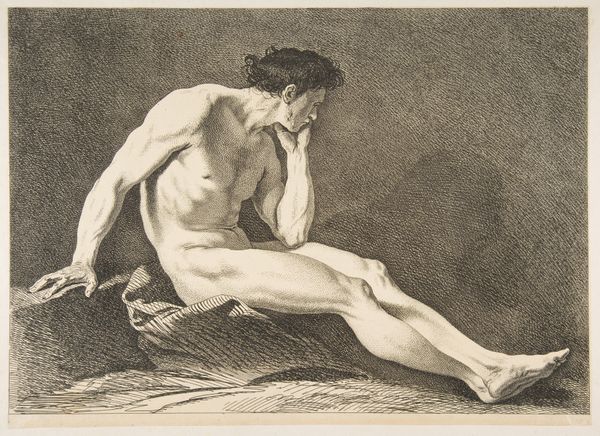
Zittend mannelijk naakt, van voren gezien (1e prijs 1807) Possibly 1807
0:00
0:00
drawing, pencil, charcoal
#
portrait
#
pencil drawn
#
drawing
#
neoclacissism
#
pencil sketch
#
charcoal drawing
#
figuration
#
pencil drawing
#
pencil
#
portrait drawing
#
charcoal
#
academic-art
#
nude
#
portrait art
Dimensions: height 523 mm, width 424 mm
Copyright: Rijks Museum: Open Domain
Curator: Here we have Johan Christiaan Willem Safft's "Zittend mannelijk naakt, van voren gezien (1e prijs 1807)," which translates to "Seated Male Nude, Front View (1st Prize 1807)," possibly from 1807. Editor: There's an intriguing air of melancholy in the sitter’s pose and expression. The light seems to catch the figure just so to make one notice how well the human form is structured. Curator: It's an excellent example of academic art, reflecting the Neoclassical focus on the ideal form achieved through mastery of line and anatomy. We know Safft was awarded first prize for it, so the artist displayed exceptional technical skill. Editor: Indeed. I’m drawn to the way the artist employed the gray-toned paper to subtly contrast the shadows with the almost porcelain-like rendering of the man’s skin, almost as if he were creating a marble sculpture on the flat picture plane. Who did Safft create it for, and where? Curator: In this period, such drawings were essential for students honing their skills. The art academies were spaces to reward the "best," thereby normalizing the values, aesthetics, and hierarchies in art and society. So, we are seeing Safft's Neoclassical academic performance in drawing and also in a professional environment. Editor: The contrast between the almost unfinished background and the complete figure definitely puts the artwork in this time and place. Safft truly draws our focus to his rendering of the human body through expert utilization of materials. Curator: Absolutely. He skillfully models the body using light and shadow, employing both pencil and charcoal to create subtle gradations and strong outlines. You can practically trace the arc of Neoclassical values in his strokes. Editor: This type of formal exercise seems intended to instruct. The focus isn't really on representing this particular man, but on expressing ideal masculine form that's typical of that era and academic establishment. Curator: I find myself drawn to how it illustrates the intersection of skill, reward, and academic practice in shaping artistic careers and how tastes are established, reinforced, and circulated. Editor: Reflecting on it, I see this as not just an academic exercise but a snapshot of aesthetic values that circulated widely, making artworks like this much more than just a rendering.
Comments
No comments
Be the first to comment and join the conversation on the ultimate creative platform.
